Gaddis are an agro-pastoral community, listed as a scheduled tribe by the Government of India, that trace their ancestry to Bharmour in Chamba district of Himachal Pradesh. Centuries ago, they settled in various regions of the Dhauladhar range in modern-day Kangra district with high concentrations around Palampur and Baijnath tehsils and neighbouring Chamba district. Pastoralism closely follows seasonal patterns of fodder availability with winters in the lower and middle altitude of Kangra and summers in higher altitudes of Kangra, Chamba, and Lahaul and Spiti valley. Gaddis in Himachal Pradesh have transitioned out of pastoralism and only a subset of the community continues the traditional practice.

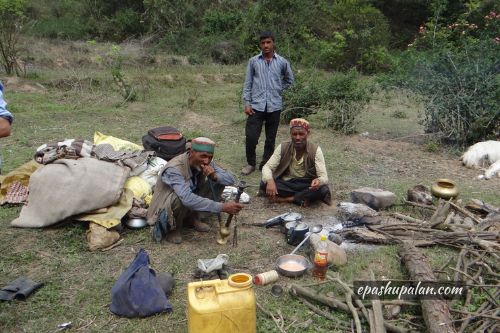
The main income streams of Gaddi pastoral livelihoods are from selling (1) sheep wool and goat fibre (2) goats’ meat, typically male animals, excluding those reared for breeding or those that cannot migrate, e.g., young, sick, and injured animals, and (3) skin of goats. Sometimes, Gaddis sell pups of their shepherd dogs. Gaddis use four types of land in a complex agro-pastoral mosaic: (1) forests, (2) high-altitude commons, (3) village commons, and (4) private land owned by farmers. The forests and high-altitude commons require permits to be issued by the forest department and other responsible government officials. The permission to graze on village commons is obtained from local landowners and institutions, while the private lands are accessed through customary relations between Gaddis and individual farmers.
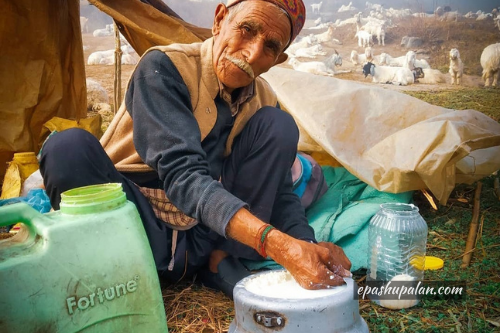
Gaddi ecosystems are a mix of land uses where social processes other than property rights institutions plays a prominent role. Based out of villages located at middle elevations, they use migratory paths to access the high altitudinal pastures in summers, dry landscapes in monsoons, and back to their home villages in winters. These migratory patterns have been made through decades of pastoral experience in navigating landscapes. Pastoral lives are inherently difficult. Everyday challenges include theft of animals, lightning strikes, landslides, rapidly changing glacial conditions, and wildlife attacks, especially from black bears. Gaddis rely on primitive technologies and autonomous adaptation strategies to cope with threats. The gaddis usually have pack animals along the flocks to carry their belongings, food and shelter equipment.
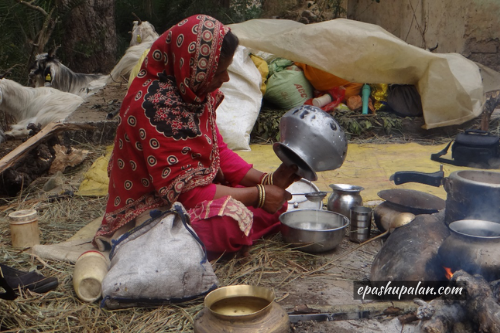

The gaddi people survive on minimalistic lifestyle. They usually carry few pairs of clothes, kitchen supplies and utensils just to meet their needs, tents and few basic amenities like torch, solar enabled lights etc. the diet primarily comprises of bread (roti) made of wheat/maize flour, lentils and other locally available resources during the commute. The goat milk also forms an important part of their staple diet and is consumed in various forms like pure milk, tea, curd, butter, ghee, kadhi (curry made with curd) etc. milk being a perishable commodity is usually milked during morning and evening time, when it is primarily required and is sometimes milked on need basis. The milk products like butter and ghee are mainstay for their dietary regimes during commute. With less or no proper equipments, gaddi people have developed their own ways of processing milk and upkeep of the products obtained thereof. The milk is usually stored in plastic cans, added with the starter culture for curd and is allowed to ferment to produce curd. The curd is then churned in the same cans (half filled to ensure proper churning) by to-and-fro motions. The fresh butter is consumed on the same day of churning while the excess is clarified to produce ghee. The gaddi nomads also make use of other animal products like hair and skin. The skin is usually used to make bags to carry certain water on pack animals, also the skin is utilised for making an instrument used to blow air into the fuelwood.
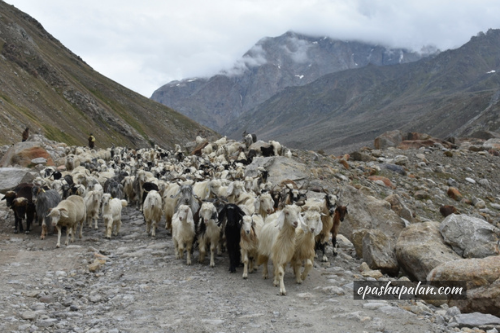
Sh. Nandu Ram is one such farmer of the state Himachal Pradesh. He belongs to the Gaddi tribe of district Kangra in Himachal Pradesh. The farmer has a family of total 8 members. He has 20 Kanals of land. He has been into the practice of rearing goats by transhumance (migratory) practice since he was 10 years old, having over 70 plus years of experience in this profession. He started rearing goats with 70 goats at the time of inclusion in the project in the year 2011. Sh. Nandu Ram was recently awarded with the prestigious breed conservation award for Gaddi goat by NBAGR.



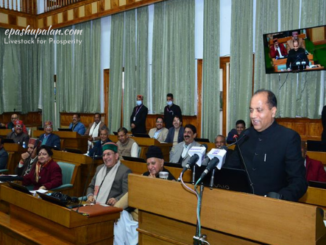

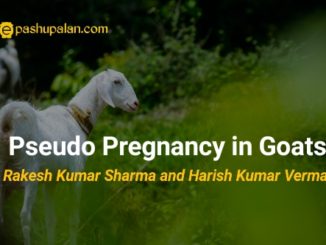

Good one 👍